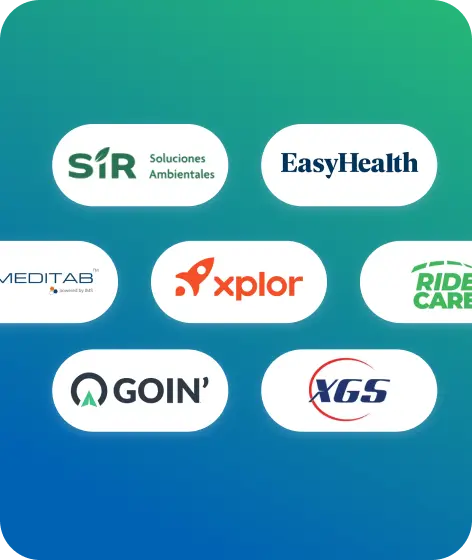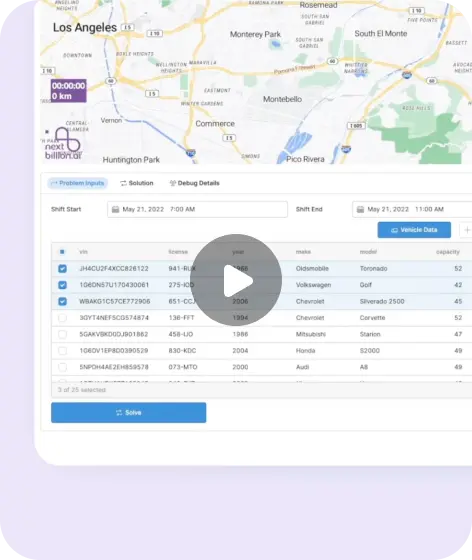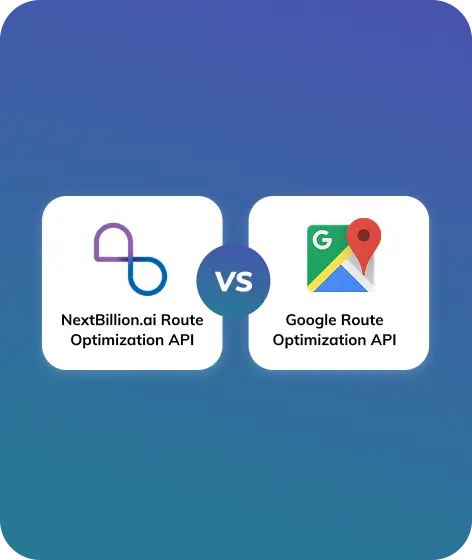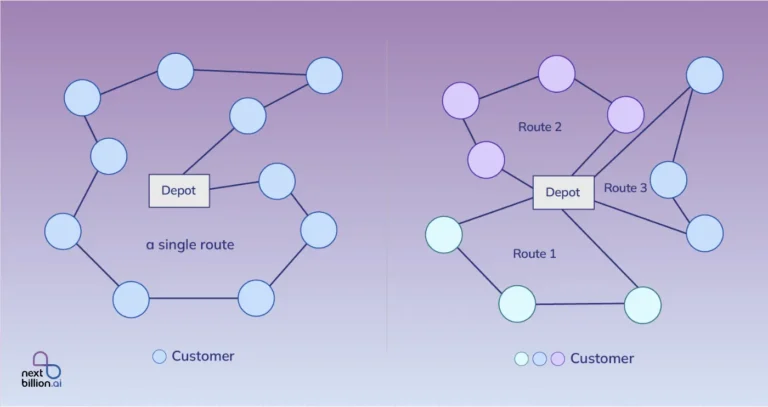
Table of Contents
When a vehicle’s engine is left running while it is not moving, this is known as vehicle idling. Heavy-duty construction equipment and immobile commercial motor vehicles are frequently observed idling in the fleet industry.
Many individuals idle every day while caught in traffic or in line at the drive-thru, it’s not always deliberate. In order to produce electricity and keep the cab warm while they sleep, truckers frequently leave their engines running. While waiting for all of the youngsters to board, school buses sit idle. Idling uses the same amount of gasoline and produces the same amount of pollutants whether it is done consciously or unconsciously.
Let’s discuss approaches to reduce idle time and the adverse consequences of vehicle idling.

Reducing Personal Vehicle Idling
Idling, or running your car’s engine when you’re not driving, actually doesn’t do anything. Idling reduces your car’s fuel efficiency, spends money, and creates pollutants. Idling for more than 10 seconds increases gasoline consumption and produces more emissions that contribute to smog and climate change than stopping and restarting your car.
Researchers estimate that 6 billion gallons of fuel are wasted annually as a result of heavy-duty and light-duty vehicles sitting idle. About half of it is caused by personal vehicles, which alone generate over 30 million tons of CO2 every year when they are idle.
In terms of fuel savings and emissions reduction, getting rid of unnecessary personal car idling would be the same as taking five million cars off the road.
How much time is it safe to leave your automobile running?
It’s okay to leave your cars running for brief periods of time, but you should attempt to reduce the amount of time they spend idle. It is never acceptable to leave a car running for an extended period of time. Given that we know there is no way to totally stop an automobile from idling, one could wonder when the issue first appears.
If you leave your car in idle mode, it may not have any issues for a long time, but if you leave it there for extended periods of time, the mechanical systems are more likely to sustain partial or total damage. Although there is no hard-and-fast rule about how long you should leave your car running, you should generally avoid doing so for longer than five minutes.
There is a considerable chance that your car will develop numerous issues if it is left in an idle position for a lengthy amount of time. Most people leave their automobiles in the idle setting because they keep the engine running when they are stopped in traffic or on crowded roads.
Drivers think that stopping and starting their cars frequently can damage them. In actuality, the notion that frequent restarts damage car engines is false.
With modern cars, it is easy to restart the engine several times without any problems. Modern engines are made to adapt to several restarts in order to make up for the loss of an idle vehicle.
Why does idling occur?
In the fleet industry, the term “idling” is frequently used. In order to save a few nanoseconds in traffic or while waiting for the merchandise to unload, most seasoned drivers can recall instances in which they idled their cars.
When the car is in idle mode, its engine runs continuously but it does not move relative to the observer. In these situations, the engine is run at very low power levels and the brakes are mainly maintained to prevent the car from moving.
Fans, stereos, air conditioners, lighters, electrical circuits, and cameras continue to function as part of the car’s supporting apparatus.
The following are some of the primary causes of fleet drivers leaving their vehicles running during rush hour:
- Many drivers believe that frequent engine starts and stops can damage the vehicle and result in excessive fuel consumption.
- In order to move on with their lives as quickly as possible, many drivers leave their automobiles idle when unloading little loads.
Effects of Idling
Even with the newest car models, many drivers still leave their cars running in the winter to warm up the engine. Additionally, some drivers think that idling saves fuel and that it’s preferable for the engine of the automobile to idle rather than restart.
Numerous inherited ideas on automobile idling have shaped our driving behaviors throughout the years, but they are now just antiquated myths about current cars.
Although excessive and needless idling might have an adverse effect, idling is not bad for your car.
Here’s why your car gets damaged by frequent idling.
Idling causes Air Pollution
Idling cars contribute to regional smog, global warming, and ozone depletion by releasing dangerous chemicals, gasses, and particulate matter into the atmosphere. More than 20 pounds of greenhouse gases are produced for every gallon of gas burned.
Vehicles that run on petrol, diesel or gas use an internal combustion engine. When a vehicle’s engine is running it releases air pollutants and greenhouse gases, including particulate matter and carbon dioxide into our atmosphere. It also produces nitrous oxide and methane.
The primary vehicle emissions that impact air quality and health are particulate matter, especially fine particles (PM2.5) and nitrogen dioxide. Nitrogen dioxide and volatile organic compounds also contribute to the formation of photochemical smog which impacts air quality in some NSW cities and regions.
In 2021, road vehicles were the second largest source of greenhouse gases in NSW, contributing to climate change.
Asthma, allergies, and cardiovascular and respiratory disorders can all be made worse by exhaust pollution. Higher levels of air pollution have been linked to an increase in hospital visits, premature deaths, and absences from school. Vehicle emissions are hazardous even when the pollution is invisible. Children are especially susceptible to air pollution because they breathe 50% more air per pound of body weight than adults do.
Effects on Human Health
The amount of air pollution is increased by vehicle idleness. According to both domestic and international research, there is a greater chance of suffering a negative health impact throughout the course of a person’s lifetime and that certain air pollutants, such fine particles (PM2.5), have potential health impacts at any level.
When exposed to air pollution, some people are more susceptible. Aboriginal people, those with pre-existing medical issues, pregnant and unborn children, children, and the elderly are all included in this.
An air pollution hotspot is a concentrated area of air pollution caused by a large number of automobiles idling in one spot. These increase the likelihood that air pollution will have a detrimental impact on a person’s health. Most at risk are those who are vulnerable.
Short-term exposure to air pollution can have the following effects:
- Breathing difficulties, wheezing, and increased coughing
- Worsening asthma and other underlying respiratory disorders.
- Increased eye and throat irritation
Long-term exposure to air pollution can have the following effects:
- A higher chance of childhood asthma
- Elevated risk of lung cancer and heart disease in individuals
- Reduced lifetime, decreased brain development and function, early birth, low birth weight, and increased risk of miscarriage
Wastage of Fuel and Money
You can extend the life of your car and save money on fuel and maintenance by reducing idling. Vehicle size, engine type, weight, and age all affect how much fuel a vehicle uses while it is at rest. According to research, starting or shutting off the engine uses less fuel than idling for longer than ten seconds.
Additionally, idling can shorten the lifespan of your car’s battery and engine and increase wear and tear on the vehicle, necessitating more frequent oil changes and spark plug replacements.
Wrecks our cars
Because your car has a lot of moving parts, idling is a bad technique to warm up your engine. Driving slowly is a better approach to warm your car’s transmission, tires, suspension, steering, and wheel bearings. This usually causes your automobile to warm up more quickly.
Strategies for Reducing Idle Time
For logistics and transportation, fleet operations must be optimized, especially to reduce costs, increase sustainability, and improve overall efficacy. You can reduce idle time and fuel costs by using the primary strategies outlined below.
1. Making Use of Technology to Reduce Idle
The main objective of idle reduction technologies is to decrease the amount of time a vehicle engine spends idling. Advanced technologies such as automatic engine systems, auxiliary power units (APUs), and direct-fired heaters can effectively control vehicle idle.
The systems provide additional power sources for electrical, heating, and cooling needs and automatically switch off engines after a certain period of inactivity to conserve fuel and operational expenses.
2. Teaching and Preparing the Drivers
The effective operation of the fleet depends on its drivers. By looking at the patterns, they may educate drivers on fuel-efficient driving techniques including maintaining steady speeds, minimizing abrupt braking and acceleration, and doing regular auto maintenance.
Training programs that emphasize eco-driving techniques also benefit the environment. Additionally, it increases the longevity of cars, gradually reduces maintenance costs, and ultimately reduces fuel consumption.
3. Monitoring Ignition Instantaneously
Real-time ignition tracking is the process of remotely and continuously monitoring a vehicle’s ignition condition. This technology enables fleet managers to promptly identify instances of excessive idle or illegal vehicle use.
By putting remedial measures in place, such as driver coaching or policy enforcement based on ignition data analysis, managers can optimize vehicle utilization and reduce unnecessary fuel consumption. Additionally, real-time ignition tracking significantly reduces fuel usage by identifying excessive idling, optimizing vehicle utilization, and other aspects.
4. Developing Route Plans That Work Better
Planning routes effectively is crucial for businesses that depend significantly on their fleet. This is where the greatest route planning software, which includes real-time tracking tools, optimal route definition, and robust trip management, comes into play. It helps managers to develop and monitor the most effective routes that steer clear of as many idle regions as practical.
Modern Cars Don’t Need To Idle
Thanks to advancements in automotive technology, modern vehicles don’t require idling. Most vehicle owner’s manuals advise against it, as modern engines reach optimal operating temperatures more quickly when driven rather than idled. Modern cars reach their ideal operating temperature faster when driven than when they are idled. The catalytic converter, responsible for reducing emissions, warms up faster when the car is in motion.
Even on the coldest days, most manufacturers recommend that you avoid idling and gently drive away after using the automobile for around 30 seconds. The engine will warm up faster when it is “at work,” and the interior of the car will warm up faster as well. Similarly, modern gasoline and diesel vehicles are not harmed by turning on and off. Compared to earlier times, batteries and starters are much more durable nowadays.
Even in cold weather, manufacturers recommend that you avoid idling. After starting your car, simply drive off after 30 seconds. The engine will warm up more efficiently while you’re on the move, and the interior will warm up faster too. Modern batteries and starters are built to withstand frequent restarts, so there’s no harm in turning the engine off and on as needed.
Nextbillion.ai’s Paratransit Software for Vehicle Idling
To cut down on vehicle idling, NextBillion.ai offers fleet management, route optimization, and vehicle tracking technologies. These technologies can help reduce idling, which will ultimately lead to decreased fuel consumption and expenses. They can achieve this through route optimization, downtime reduction, and enhanced driver behavior.
The Paratransit platform from NextBillion.ai transforms how transportation operators manage demand-responsive services with its flexibility, efficiency, and enhanced accessibility. The rider experience is enhanced, operational efficiency is raised, and operator expenses are reduced when paratransit software is used. Below, we discuss the benefits in more detail:
1. Improved Inclusivity and Accessibility
Maintaining comprehensive rider profiles also allows for customized services, allowing providers to tailor transportation to specific needs. This level of customization boosts passengers’ trust and fosters a courteous and welcoming environment. Additionally, the software’s automated scheduling and dispatching reduces wait times and delays, improving the accessibility and dependability of paratransit services while also making trips more predictable and reliable.
2. Greater Inclusivity and Accessibility
Keeping thorough rider profiles enables suppliers to provide specialized services, such as helping elderly passengers who need extra help or travelers with visual impairments. This degree of personalization increases passenger confidence and creates a polite and inviting atmosphere.
Furthermore, the software’s automated dispatching and scheduling minimizes wait times and delays, increasing the dependability and accessibility of paratransit services while also enhancing the predictability and consistency of travel.
3. Cutting Expenses
Paratransit software’s optimized routing minimizes needless miles, which results in significant fuel savings and lower operating costs. This is a particularly beneficial advantage for bigger fleets, as these efficiencies convert into significant long-term cost savings.
Furthermore, the program minimizes driver wait times and vehicle idling by streamlining pick-up and drop-off schedules, which decreases labor and maintenance expenses. Fleet managers can reduce the number of cars and drivers needed to satisfy demand by using automated resource allocation. This lowers overhead costs while preserving excellent service quality and efficiency.
4. Enhanced Rider Contentment and Experience
With precise arrival times and real-time tracking, NextBillion.ai’s Paratransit software improves the rider experience. Passengers can plan around these timings and feel more confident thanks to the service’s very convenient features. By making it simple for passengers to modify or cancel reservations, the software also improves trip flexibility by lowering last-minute cancellations and no-shows and enabling the service to be tailored to each customer’s needs.
5. Improved Rider Experience and Satisfaction
The Paratransit software from NextBillion.ai enhances the rider experience with accurate arrival times and real-time tracking. The highly practical characteristics of the service allow passengers to plan around these times and feel more secure. The software also increases trip flexibility by reducing last-minute cancellations and no-shows and allowing the service to be customized to each customer’s needs by making it easy for customers to change or cancel reservations.
6. Making Decisions Based on Data
Through comprehensive reporting on trip durations, wait times, fuel consumption, on-time performance, and other crucial indicators, the platform offers vital operational information. Fleet managers can use this information to pinpoint problem areas and gradually enhance operational effectiveness. Additionally, peak hours, seasonal trends, and rider preferences can be predicted thanks to predictive analytics, which is fueled by previous demand patterns.
Proactive resource planning and improved service management are made possible by this foresight. In order to assist operators in gauging service quality and guaranteeing adherence to set standards, the software additionally monitors key performance indicators (KPIs), such as no-show rates, trip completion durations, and driver productivity.
7. Reporting and Regulatory Compliance
The Paratransit software from NextBillion.ai is essential for guaranteeing ADA and funding compliance since it helps operators fulfill legal obligations and stay out of trouble by producing reports that show conformance to ADA standards. Since compliance is frequently a requirement for financial support, this is particularly crucial for groups that rely on government funding or subsidies.
Furthermore, by automating the reporting process and gathering data for regulatory filings, the program lessens the administrative load and lowers the possibility of inaccurate data. This tool streamlines compliance and improves operational efficiency, especially for agencies that must regularly update on service performance.
8. The ability to scale and adapt
Everything from tiny fleets in constrained locations to large, citywide systems can be accommodated by the software’s adaptable operations. Because of its adaptability, it can be used by a variety of users, including private operators and public transit authorities. The program may be readily expanded to accommodate additional vehicles, greater service areas, or more frequent journeys without sacrificing efficiency for growing enterprises.
In order to maintain alignment with operational requirements and improve service delivery, the software also has customizable features that enable operators to modify settings, add integrations, or create custom processes as needs change.
9. Reduction of Environmental Impact
For providers who are dedicated to sustainable operations, the software’s optimized routing and effective vehicle utilization help to cut fuel consumption and, consequently, carbon emissions. Furthermore, eco-friendly planning functions provided by certain software programs allow operators to select routes with the least possible negative environmental impact.
These choices could include designing routes with electric vehicle charging stations or avoiding busy areas to cut down on emissions and idle time. When used in tandem, these resources enable operators to make environmentally responsible decisions that promote long-term sustainability objectives and improve operational effectiveness.
Why Choose Our NextBillion.ai Paratransit Solution
With more precise traffic forecasts and an AI-powered platform that guarantees ideal scheduling and dispatching, NextBillion.ai distinguishes itself from competing options.
NextBillion.ai Paratransit Solutions’ Unique Selling Propositions (USPs) can include the following:
- AI-Driven Traffic and Route Optimization: To identify the most effective routes, use AI to comprehend traffic patterns, the time of day, and other crucial factors.
- Customer-Centric Support: The customer support agents at NextBillion.ai are dedicated to helping you get the most out of the platform and tailor it to your operational needs.
- Platform that is both flexible and scalable: NextBillion.ai’s software is ideal for managing both small and large fleets, and it is designed to grow with your business.
- Real-Time Analytics and Insights: NextBillion.ai’s advanced analytics let operators monitor performance, manage compliance, and make informed decisions.
- Faster and More Accurate Routing: By making sure that trips are as short and simple as possible, AI-driven routing speeds up deliveries.
- Fuel Savings: Optimized routes help operators consume less gasoline and fewer carbon dioxide by cutting away unnecessary distance.
- Reduced Operational Costs: By employing efficient scheduling and dispatching, operators can reduce the time, fuel, and personnel costs associated with paratransit services.
Conclusion
Idleness affects everyone. Vehicle idling may seem innocent, but its environmental, economic, and mechanical repercussions are far-reaching. While traditionally considered a fundamental component of driving, current technology and revised vehicle rules have rendered extended idling both unneeded and dangerous.
Reducing idle time is one of the easiest yet most efficient ways to cut emissions, conserve fuel, and promote cleaner air in both private automobiles and commercial fleets. By embracing smarter driving habits, using idle-reduction technologies, and educating drivers, we can make a measurable difference—for our vehicles, our wallets, and the planet.
We can proceed even if the engine is not running. Nextbillion.ai can assist you in finding smart answers to your problems.
About Author
Divya Nair
Divya is a dedicated Technical Content Writer with experience of two years in the industry. Her expertise spans various forms of writing, including blogs and website content.








